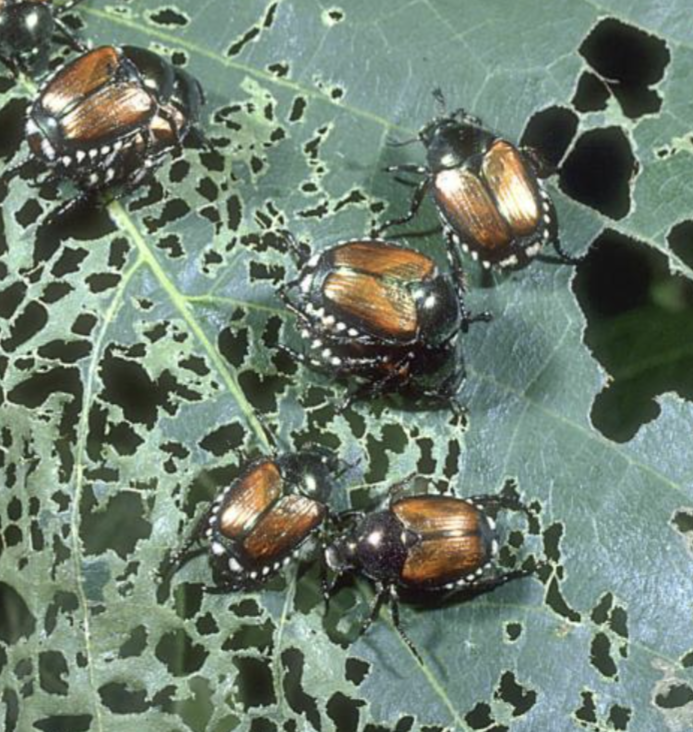Ask Anna – June 2025 Questions
Happy June, everyone!
While we enjoy this warm weather we are answering the question: Japanese beetles are eating my plants, how do I get rid of them and prevent more from coming?
As the warm days of summer roll in, many gardeners find themselves facing a common adversary: the Japanese beetle. With their shiny metallic green bodies and coppery wings, these pests can wreak havoc on your beloved flowers, fruits, and foliage. They have a knack for eating leaves, leaving behind nothing but the veins. But don’t worry! With a few friendly and effective strategies, you can protect your plants and keep these pesky beetles at bay.
- Handpicking – The Simple Solution One of the best and most straightforward methods to combat Japanese beetles is handpicking them off your plants. Early mornings are the best time for this task when these little critters are sluggish due to the cooler temperatures. Grab a bucket of soapy water and gently pluck the beetles off your plants. Drop them in the bucket to dispose of them—this method may feel a bit tedious at first, but regular picking can significantly reduce their numbers!
- Use Row Covers for Protection – If you have a smaller garden or prized plants, consider using floating row covers. These lightweight barriers can physically block beetles during their feeding frenzy, which usually occurs from late June through August. Just be sure to remove the covers during pollination if you’re protecting fruiting plants, so the bees can do their important work!
- Organic Solutions – Neem Oil and Insecticidal Soaps. For those who prefer organic gardening methods, neem oil is a fantastic option. This natural remedy not only deters beetles but also disrupts their life cycle when sprayed on affected plants. Insecticidal soaps can also be effective. Remember to apply these treatments consistently and reapply after rain for the best results.
- Traps: Use with Caution – While Japanese beetle traps are an option out there, they can sometimes attract more beetles than they capture. If you decide to give traps a try, position them at least 30 feet away from your garden to avoid luring more beetles into your plants.
- Control Grubs in the Lawn – It’s important to remember that Japanese beetles begin their life cycle as grubs in the soil. They lay eggs that hatch into grubs that feed on grass roots. By applying beneficial nematodes or milky spore to your lawn in late summer, you can help reduce grub populations, which in turn limits the number of beetles you’ll encounter in future years.
- Plant Strategically – If you’re frequently dealing with Japanese beetles, consider adjusting your garden selections. Some plants attract these beetles more than others. If they’re a persistent problem, you might want to avoid planting favourites like roses, grapes, and linden trees. Instead, opt for beetle-resistant varieties that can thrive with less drama!
By combining these friendly methods—manual removal, organic treatments, and proactive lawn care— you can effectively manage Japanese beetles and enjoy a flourishing, healthy garden. Happy gardening, and may your plants thrive this summer!
If you have gardening questions or need advice, feel free to reach out! You can send your questions to me at: [email protected] with the subject line “Ask Anna,” and I’ll happily feature your questions in next month’s Seeker.
Stop by Harvest at 2405 Vincent Massey Drive and also at 75 Cornwall Centre Road to pick up your copy of the Seeker each month.





